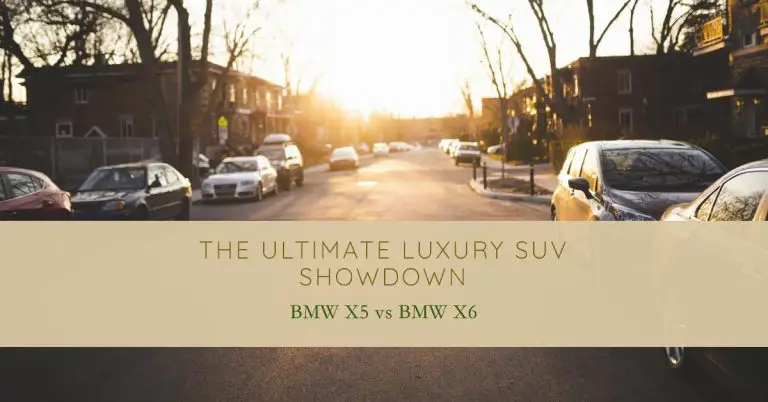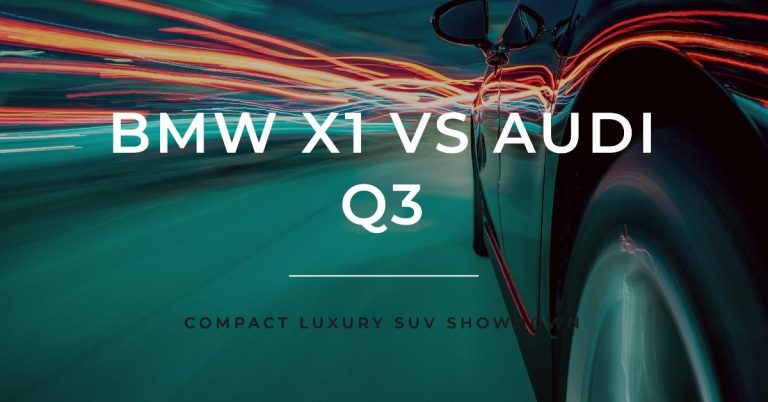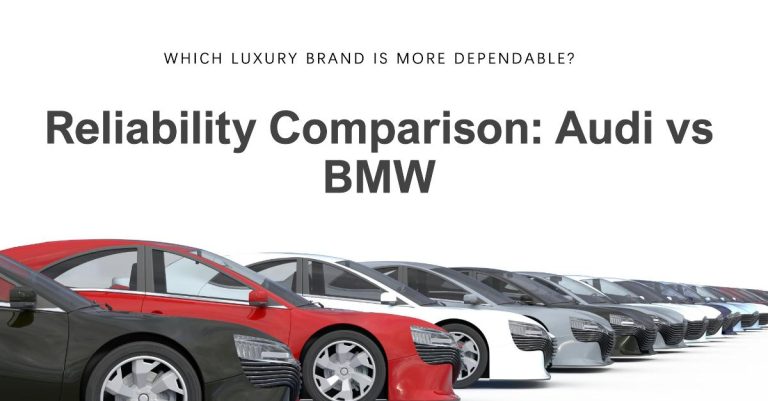BMW E90 vs E92: How Does the Sedan Compare to the Coupe?
The BMW 3 Series spanned six generations from 1975 to 2019, with each iteration cementing the car’s reputation as a sports sedan benchmark. Arguably the most intriguing matchup in the 3 Series lineage comes from the E90/E92 generation, produced from 2004 to 2013. During this period, the 3 Series split into two distinct models – the E90 sedan and the E92 coupe.
At first glance, the E90 and E92 appear quite different, with the sleek E92 coupe sporting a radically sloped rear roofline. However, under the skin, they share most of the same components and performance hardware. This begs the question – besides the obvious body style variance, what exactly are the differences between the BMW E90 and E92?
This in-depth comparison will examine how the E90 sedan stacks up to the E92 coupe across four main categories:
- Exterior styling distinctions
- Interior comfort and features
- Shared powertrain and specifications
- Driving dynamics and performance
Additionally, we’ll evaluate which body style delivers the ultimate driving experience for BMW enthusiasts. Let’s take a closer look under the sheet metal at these two modern classics.
Exterior Styling Differences
As the sedan variant, the BMW E90 unsurprisingly has a traditional 3 box design with a separate trunk. The roofline is tall and vertical, with a relatively upright rear end. The trademark BMW kidney grille flanks the front, along with contoured headlights flowing into the fenders.
Conversely, the E92 coupe sports a radical fastback silhouette with a tapered roofline that seamlessly blends into the trunk lid. This gives the car a much lower, aggressive stance compared to the E90. The E92’s front fascia is similar but distinguishes itself with sleeker, more angled headlights and larger air intakes below.
The differences continue in the rear views. The E90 has a short trunk lid with taillights that extend onto the rear fenders. In contrast, the E92’s tail lights are tucked into the tapered, integrated trunk line for a seamless look. The E92 also has wider rear wheel arches and two sets of exhaust tips versus a single tip on one side for the E90.
Overall, the E92 coupe clearly provides the more striking, performance-oriented visuals from front to rear. The sleek roofline and integrated trunk sell the sports car aesthetic in a way the more conservative E90 sedan cannot match. However, the E90 retains an upscale and attractive, if less flashy, design befitting BMW’s luxury pedigree.
Interior Variances
As expected given the differing body styles, the interior layouts between the E90 and E92 vary considerably in the rear seats and cargo areas. However, the front cabin and cockpit sections are nearly identical.
Both cars came standard with high quality leatherette upholstery, with leather upgrades available. The driver-focused dashboard design is also shared, dominated by the signature floating central LCD screen. This displays navigation, entertainment, and vehicle settings, controlled via the iDrive system and rotary controller.
The main interior distinction is the rear seating arrangements. The E90 sedan has a traditional three-across rear bench with ample legroom for adults. Conversely, the E92 coupe has two individual bucket seats with a center console dividing them. Naturally, the lowered coupe roofline also reduces rear headroom.
Cargo space sees a similar discrepancy, with the E90 offering 12 cubic feet of trunk volume versus just 11 cubic feet in the E92. However, the coupe’s rear seats fold down to expand cargo capacity as needed. Ultimately, the E90 sedan is much more functional for carrying passengers and luggage. But the E92 offers unique styling and a sportier vibe in the back seat.
Shared Performance Hardware
While the exterior and interior differences are clear, you may be wondering – do the E90 and E92 actually perform the same? The answer is an emphatic yes. Despite the differing designs, the two models share all of the same engine, transmission, suspension, and brake components.
The majority of E90 and E92 models came equipped with the legendary inline 6-cylinder N52 or N54 engines in various states of tune. Optional V8 engines were also available in the 550i and M3 trims. Both rear-wheel drive and xDrive AWD systems were offered. Transmissions included a choice of 6-speed manuals or automatic gearboxes.
Available suspension set-ups were identical as well – the standard comfort suspension, optional electronic dampers, and high performance upgrades on the M3, M Sport, and Alpina models. BMW’s near perfect 50/50 weight distribution was maintained on both the sedan and coupe. Curb weights ranged from 3,227 to 3,903 pounds for the E90, and 3,285 to 3,940 pounds for the E92, depending on engine specs.
In terms of performance, the E90 and E92 are evenly matched across the model range. The 0 to 60 mph acceleration times and top speed ratings are the same for both body styles with the same engine. Enthusiasts will be happy to know that driving dynamics did not suffer in the sleeker E92 coupe.
Driving Dynamics Comparison
Given their shared hardware, you would expect the BMW E90 and E92 to drive similarly and offer equivalent handling capabilities. After all, the superb driving dynamics and “Ultimate Driving Machine” ethos are hallmarks of the 3 Series DNA.
As predicted, cars with the same drivetrain feel nearly identical from behind the wheel. The steering calibration, suspension tuning, and throttle response all translate seamlessly between the sedan and coupe variants. Minimal body roll and responsive turn-in make both Exceptionally nimble through corners.
However, due to the lower and wider shape, the E92 coupe does have slightly better overall weight distribution – 50.7% front/49.3% rear versus 51.4%/48.6% on the E90. Consequently, the E92 exhibits marginally flatter and more balanced handling at the limit before understeer tugs at the front wheels. But this is a nuanced difference only discernible when driving aggressively.
The other minor deviation comes from ride quality and road noise insulation. The E90 sedan delivers a touch more compliance and isolation from bumps and pavement imperfections. This stems from its taller tire sidewalls and extra sound dampening material necessitated by the larger cabin.
In summary, those anticipating major performance variances between the E90 and E92 will be surprised at how similar they feel. These subtle distinctions only manifest at the very edge of the handling envelope. From the average driver’s perspective, the cars deliver equal doses of world-class steering, suspension, and overall driving enjoyment.
Which Provides the Better Driving Experience?
Given their comparable capabilities, which 3 Series iteration ultimately provides the more engaging and exciting drive – the E90 sedan or E92 coupe? There is no consensus answer, as personal preferences vary widely on body styles.
From a practical standpoint, the E90 sedan offers greater everyday usability and flexibility. The extra rear seat and trunk space make the E90 better suited to real world commuting and errands. Families will also appreciate the larger interior volume. However, the sedan aesthetic lacks the emotional appeal of the coupe’s sleek lines for many drivers.
The E92 coupe provides a more exotic look and sporting feel behind the wheel that enthuses BMW’s passionate owner base. That gracefully arching roofline and intimate two seat cockpit create an upscale ambiance for a luxurious driving experience. Coupe buyers favor style and excitement over practicality.
Fortunately, there are no compromises required on performance. Drivers can relish twisting back roads and acceleration runs with equal delight in either the E90 or E92. For those torn between the two, nicely optioned examples of both body styles can be found in the same $20K to $30K price bracket today.
Ultimately, the choice comes down to personal style preference. The E90 and E92 each deliver quintessential BMW driving engagement. Shoppers simply need to decide if they fancy the coupe’s striking looks or the sedan’s functionality for their needs. Regardless, they’ll be getting one of the finest sports sedan platforms ever engineered.
Summary of BMW E90 vs E92 Differences
In this detailed comparison guide, we discovered that the BMW E90 and E92 share far more similarities under the skin than their exterior designs suggest. Here is a condensed recap of how the two 3 Series variants from 2004-2013 stack up:
- Exterior Styling – E92 coupe has a much more radical, sloping fastback shape compared to the E90 sedan. Wider rear track and dual exhausts also differentiate E92.
- Interior Layout – Nearly identical front cabin and materials. E92 has reduced rear seat and cargo space due to two-seat layout. E90 rear bench more practical.
- Performance Hardware – Same excellent engines, transmissions, suspension and brake components. Equally agile and quick across the model range.
- Driving Dynamics – Virtually identical feel and handling except for slight balance differences at the limit. Both deliver quintessential BMW steering and chassis tuning.
- Driving Experience – Subjective personal preference for coupe or sedan styling and packaging. E90 provides greater practicality while E92 offers greater exotic visual appeal.
In closing, BMW enthusiasts shopping this era cannot go wrong choosing either the timeless E90 or gorgeous E92. With over a decade gone by, both cars deliver modern classic styling, luxury, and driving enjoyment for the money. Whether you lean towards the maturity of the 4-door or the style of the coupe, either choice guarantees an Ultimate Driving Machine.







